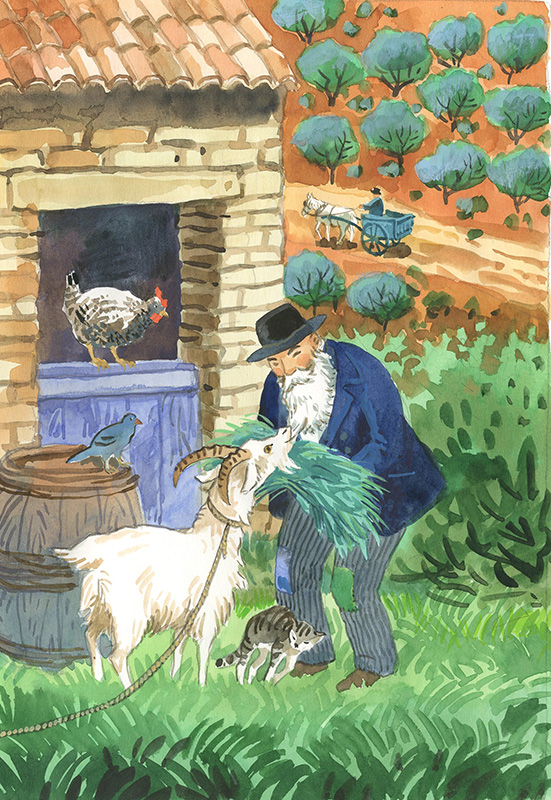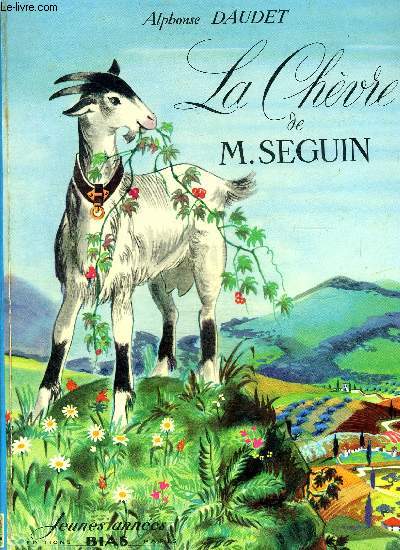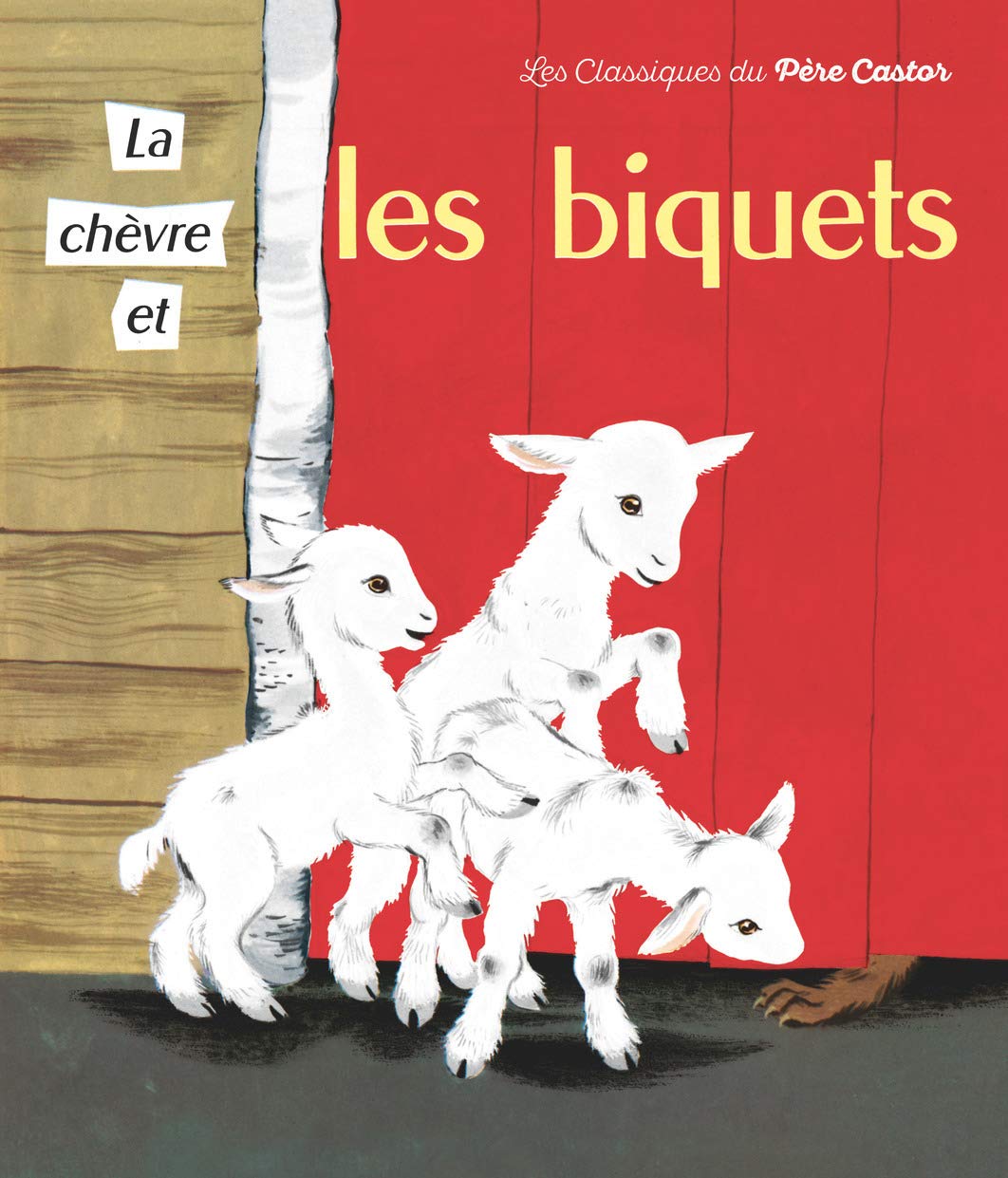Programming.
It is December, and this month has become the month of the children, of those who believe in tales, legends, animal stories like no other.
So Altair, necessarily, will have to dedicate December to children and those who believe in tales, legends and the wonders of the world.
Tonight, I wanted to share my most beautiful stories in which goats are the main animals.
I love goats – yes I come from Algeria, yes my whole childhood is filled with biquettes, little queens of our streets, with their raised muzzles, their little horns that pretend to be dangerous, their little goatee and their astonishing speed at stealing bread from your hands.
They are everywhere, the biquettes, in the world around the Mediterranean. They are a bit pretentious: they make you believe they can climb the highest mountains, they think they are chamois – and then at some point, it’s too high, it’s too difficult, so they come back down – but with class.
They are independent and they pretend very well that they are not afraid of anyone.
They say they are free and they don’t need anything – and it’s true: they will have eaten everything before you even think they can eat your shoes.

So they have become characters in our stories.
The saddest is the story of Mr. Seguin’s goat.
Her name was Blanchette. Mr. Seguin was an old man who had a nice farm, a beautiful green meadow, with a lot of grass. But he had put a fence around his meadow. She couldn’t get out.
And in the distance, she could see the path that climbed the mountain.
The world must have been so beautiful, seen from the mountain.
All of Mr. Seguin’s goats left, one after the other, to see the free life of the mountain.
And Blanchette, too, wanted to see the real world. She did not want to be protected.
Mr. Seguin had told her that it was dangerous, that there was a wolf upstairs waiting for the young, dizzy goats.


She left anyway. She spent a whole day sniffing all the flowers, tasting all the leaves, getting drunk from the sun on her back, from the dew of the herbs.
And at night – the wolf came.
Down in the valley, Mr. Seguin called his little goat to come back and be saved.
It was too late.
So she didn’t cry.
She was afraid.
But she turned in front of the wolf and fought.
With her tiny little horns.
She hit him. Once, twice.
He bit her, she bled and she hurt for the first time in her life.
She didn’t put her head down. She kept fighting, with her tiny little horns and all her courage.
She fought all night long, under the stars, in the pure and clear and free night.
She fought.
And in the morning she bent her knee.
It was over.

I don’t know a child who doesn’t cry when he hears this story.
It’s not fair – she should have won.
But yes it is fair – she couldn’t win.
She knew that. … that’s the kind of story that allows us to talk about the price of freedom, courage, pride. And we need to tell stories of freedom, courage and pride to children.
And because this story is very sad, we have to add the other one. The story of the goat and its kids. They were three biquets and their mother, in a small house away from the village. She had to go shopping – but the wolf was prowling around. What to do? Mom warned the little ones: don’t open the door.
Be careful, the wolf is disguised, he will lie to you.
She gives them a code: when she comes back, she will show her white paw under the door.
Then they will open. The little ones promise, swear, whatever Mommy wants – she leaves, almost reassured.
The wolf then knocks on the door, threatening the little ones. They are not afraid – the door is well closed. He had heard the story of the white paw. He runs to the mill, dips his paw in the flour – comes back on three legs – slides his white paw under the door.


The youngest one is delighted: it’s mom, let’s quickly open the door.
The older one is not very sure – she has a strange voice, mom, don’t you think?
The little ones are confused.
The wolf softens his voice as much as he can, makes up a big lie to explain his new tone.
The youngest one opens the door.
And as he opens, flour falls from the wolf’s paw – and they see in horror the ugly black fur of their enemy.
The wolf throws himself inside.
But this time he doesn’t have to deal with a tiny little goat with its tiny little horns. He is dealing with a mother who is defending her cubs. The goat was not quiet. She made it as quickly as possible and when on the way she sees the door open, she understands everything.
She rushes inside :- and the wolf gets away in such a bad condition that he will never come back.
And our children are reassured: goats don’t always lose against wolves.
Most of the shows related to these stories use shadow puppets, puppets – music and, of course, voices – which are undoubtedly the most important element.
You will tell me that these are not the most wonderful stories? But children’s time is also the time to talk about what we never talk about – when on earth do we have time to talk about freedom with our children? Freedom is beautiful. And it’s also very hard. I’m in favor of shows that make you grow up, that make you talk afterwards.
Tomorrow, okay, another goat story – yes I love goats – but a much happier story for the goat. In the end.
All I can say is….wow
FF approves goats. Thank you for the read!
My emotions do not know what happened…smiles…frowns…serious…happy…sad….thankful…so many
I like you
~FF
LikeLiked by 3 people
hey ! the entertainment is “magic”, isn’t it ? thank you for your words – really.
LikeLiked by 1 person
magic.
I wish I could give you more than words, but at least they are meaningful!
LikeLiked by 1 person
Merci- thank you so, so much.
LikeLiked by 1 person
Life lessons which aren’t always happily ever after, parents answer the questions after. I enjoyed this post and will be looking forward to a few more little kid stories. 🐐
LikeLiked by 1 person
Thank you for your comment ! Yes, a lot of kid stories are really great.
LikeLiked by 1 person
You’re welcome 😊
LikeLiked by 1 person
The gift of goats can bring hope to those that mope.
LikeLiked by 1 person
LikeLiked by 1 person
Wonderful stories except for the demise of the first little goat. I love goats, the little ones are so adorable. And such personalities……….I always wanted one for a pet when I was a child. Well actually that’s a lie, I kinda want one now too.
LikeLiked by 2 people
🙂 oh yes, I understand you so well … I love goats so much too
LikeLiked by 1 person